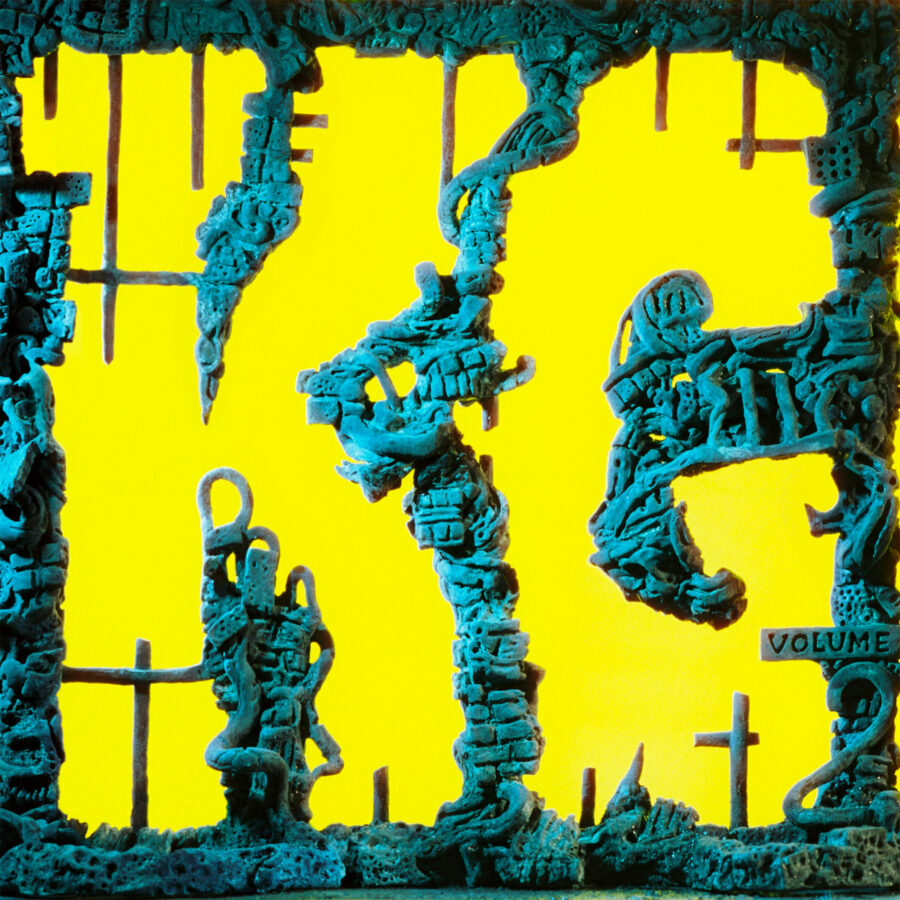Throughout their now-tenured career, King Gizzard and the Lizard Wizard have averaged just about two studio album releases each year. But their dedication to music creation isn’t just in the form of vast quantity. The main point of King Gizzard’s success is the crazy fact that most of their sixteen records maintain a unique sound and identity—well, that and their nasty instrumental skills. This almost guarantees each record to be new and refreshing in the ears of fans and also expands the width of their appeal.
The most profound example of their endless sonic approaches can be seen in 2019 with their duel releases, Fishing For Fishies and Infest The Rats’ Nest. The former is a boogie-filled, positive, environmental record, while the latter is a dark, thrash metal extravaganza versed in class-based critiques. So when I heard they opted to make a sequel to one of their earlier records, Flying Microtonal Banana (2017)—shown off by the subtle “Volume 2” in the K.G. cover art—I was a bit worried their creativity was stunted. But more often than not, I was proven wrong.
Like the title suggests, Flying Microtonal Banana utilized microtonal tuning, and K.G. does the exact same. But where the first edition settled comfortably in microtonal psychedelia, filled with fuzzy words and grimy guitar riffs, this iteration is much less focused—splicing the nonstandard tuning with the likes of folk music, and even hints of techno. It’s the record’s most consistent thread, throwing away any thematic or sonic cohesion in exchange for some pretty genius experimental moments. “Straws In The Wind” is a wistful, almost medieval tale full of whimsical woodwinds, where “Intrasport” lies on the border of funk and 90s club-friendly pop music, yet both sound insanely good and surprisingly natural.
Perhaps the most surprising part of the project is then the length at which they go to guarantee there’s no stutter or juxtaposition between the tremendously different sounds. Each song’s trailing seconds are filled with time changes, compositional shifts, and more, all to ready you for the next entry in the album. When played in entirety, it flows similar to a nonstop jam session, taking what would normally be a very sporadic record, and giving it a somewhat natural progression throughout.
The places where K.G. falters the most are actually found in King Gizzard’s more traditional attempts at microtonal playing. The record’s prequel handled some of the best of what rock-based microtones have to offer, so when tracks like “Automation” and “Minimum Brain Size” come up, it’s harder to get excited about. The brain-melting buzz of lo-fi recording and distorted instruments is fun, but sticks out much less than their one-of-a-kind counterparts—and in the case of “Automation,” I could throw that into almost any project from Thee Oh Sees, and it would fit perfectly.
Of course, the record wouldn’t find its way into King Gizzard’s discography without mind-blowing instrumental performances, and K.G. is full of them. The breaks in “Oddlife” are a coalesced mass of echoing drums, bright synths, and euphoric guitar performances. “The Hungry Wolf of Fate” features possibly the most powerful, smothering, grimy guitar chords I’ve heard in my young life. And the entirety of “Intrasport” is a feat of its own—adding their own ominous, psychedelic touch to the wonky beats of a would-be 90s classic.
Altogether, K.G. is a bit of a step down from their recent projects. It lacks a thematic flare that both of their 2019 releases had and the inherent uniqueness of most of their discography. But it does its best to expand when it can, and sometimes the results are surprising.
Advertisement
Advertisement
